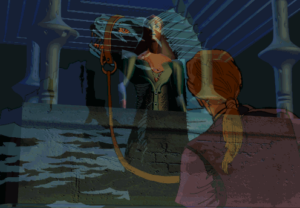I’d rather write about the current state of the world in general, how russians proved once again they don’t deserve to be called humans, how only an idiot would trust their word or believe they’re going to keep any agreement, how the general attitude of dealing with russia looks like somebody attempting to cure a disease so that the treatment does not cause any discomfort even if allows that disease to progress until it’s too late to cure it… But I’ve written all about it previously so I’ll write on a related but less crucial topic.
I ranted about the state of Firefox less than two weeks ago. And what do you know, version 128 proved out to be even worse with its attitude to the users. One could wonder how it can get worse but apparently Firefox CTO decided to give a public justification of their decision. So their answer to the war with the annoying advertisements is making sacrifices of the users’ liberties in hope that the aggressor will be satisfied with that (it always worked fine in the real world as can be seen by World War II and the ongoing World War III).
The sad thing is that the advertising is responsible for the current web of bullshit, here’s a short review.
John Wanamaker allegedly said “I am convinced that about one-half the money I spend for advertising is wasted, but I have never been able to decide which half.” It’s hard to disagree with it (except that the share of effective advertising feels much lower these days) and that’s the root of the current problems.
Considering that a lot of the first domains in the Web were belonging to the large companies no wonder ads were present there from the very beginning (a small example: one of the oldest pages on The Wayback Machine is for http://www.ads.digital.com). But the real boom of advertising started when lots of ordinary people started to frequent it and various companies felt that there are money to be made off that. Add rather unscrupulous website designers and you get the (first) dark ages of Internet: annoying Flash banners, pop-ups and pop-unders, blinking text and so on. There’s the first bullshit tendency for you—putting as many ads on a page as the browser can render. And coming with it the second bullshit tendency—inflating content for accommodating more ads. Well, if you give people a way to profit off advertisement placement somebody is going to abuse it to death.
And then somebody came with the main bullshit idea: advertising can be targeted! Theoretically if you know enough about the person (or at least its actions and habits) you can offer that person only the relevant ads thus making the success rate close to 100%. In practice it does not work because people do not work like this at all (banner blindness exists, people usually get too scared when their “smart” device starts recommending them something they talked about in its presence, many people really want different things from what they believe they want and so on; and that’s not counting how the common pattern for recommendations is “you bought an electric stove recently, that means you want to buy another electric stove”). And this bullshit stimulated the growth of privacy violations and social networks. But I repeat myself.
So that’s all fine for the ad networks who can feed this bullshit to the entities placing those ads (as well as another one that those ads will be shown only to the target groups selected by them). Now it was time for people trying to earn money from displaying those ads (voluntarily or not) to learn that earning much from those ads is bullshit. Advertising on streaming platforms gets more and more aggressive but looks like for the content creators the main revenue source is subscriptions and donations but never the share from the ads provided by the platform (partner deals to place specific ads directly in the video may be a different case, you should know those MMOs and VPN services by heart now). Small blogs also seem to live off subscriptions and donations with an occasional native advertisement.
But of course there must be people who decide to automate the process as much as possible to get those vanishingly small amounts of money per ad click for millions of clicks. That’s how we get bullshit generated just to lure people to click on the ads (still talking about the Web and not, say, mobile games BTW) and even bot networks to click ads on bot-generated pages that were placed by the ad-bots. Some call it the Dead Internet Theory, I called it right in the title.
But it’s not all that bad, sometimes things get better: browsers learned to block pop-ups even without a separate plug-in, Flash was killed (maybe because a certain guy could not control it on his phones, or it made them look under-performing—in either case they both are dead now), there are certain legal restrictions for advertising in the Internet even in the USA let alone EU and there are ad-blockers. The main disadvantage is that major browsers are controlled by the companies depending on ad revenue (and A**le, where ads are merely a part of iExperience), Mozilla joining them recently. So it’s natural for them to try offering more data to the advertisers and restrict ad-blockers as much as possible (does anybody believe that things like Manifest V3 have any different intent?). We see the first step done by Mozilla already, crippling uBlock Origin looks like a matter of time. At least it should help Ladybird, Servo and maybe some Firefox forks to develop faster.
